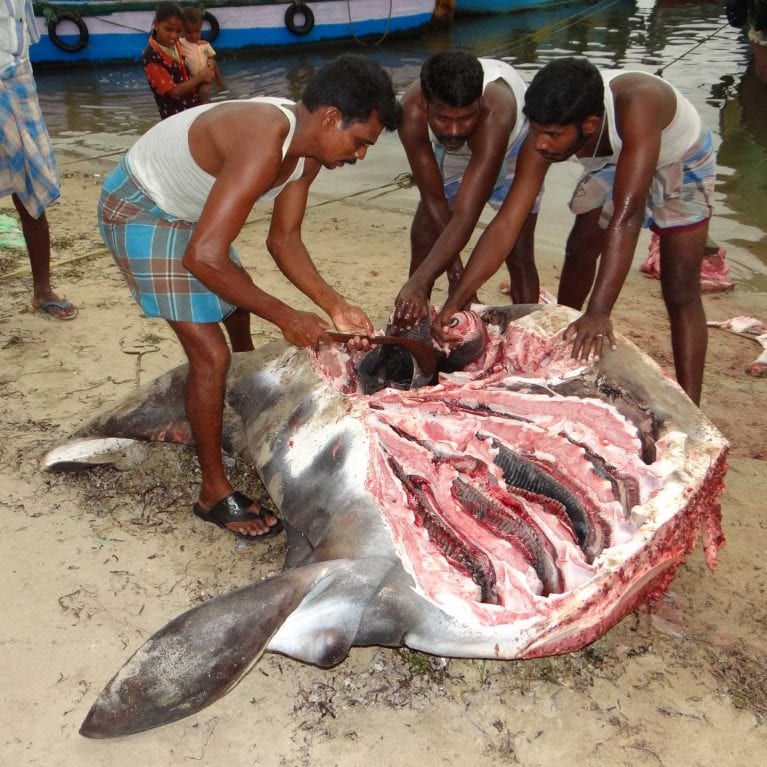Market for mobulids
Mobulid rays are in trouble all over the world, especially in Asia where there is demand for their gill rakers. Every day, Mohanraj visits fish markets to find out what is happening to these graceful animals in India.
National assessment of the Indian mobulidae fishery
This research is designed to study the biology and fisheries of Mobulidae species encountered at landing sites along the Indian coastline. These elasmobranchs are currently facing high exploitation rates due to the international gill plate trade, with India being one of the largest exporters to China.
Data collected during the past year indicates a seasonal fishery for both manta and mobula rays exists at two landing sites in south India. However, lack of data hampers management plans for these species’ conservation. In addition, more adequate data is needed about these species in all regions of India.
The Mobulidae fishery in India has been poorly studied. Manta and mobula rays are caught by long-lines, gill nets and purse seine nets. Oceanic manta rays Manta birostris are locally called ‘kombu thirukkai’ or ‘kotuwa tiriki’ in Tamil. In Andhra Pradesh and on the island of Kalpeni in the Union Territory of Lakshadweep a specially designed harpoon fishery exists for devil rays. In Veraval there is a mobulid fishery during the months of November and December, and during April and May. Occasional catches of large mobula and manta rays in drift nets at 40 to 60 metres deep have been reported from the Gulf of Mannar from September to October. Analysis of monthly catch of rays in Mumbai for a 15-year period reveals the occurrence of two peaks in the annual landings: a primary peak in catch and catch rate observed from September to December (post-monsoon) and a secondary peak from February to April (pre-monsoon). Each year lunar tides and the Indian Ocean monsoon currents combine to create a suction effect, which pulls tropical krill and other plankton from deep water up to the surface. Manta and mobula rays primarily depend on plankton and small fishes as a source of food and there is a seasonal influx of these rays into the coastal waters of India at these times of the year.
The aims and objectives of this project are to:
- Undertake surveys along the entire coastline of India to assess occurrence and extent of the mobulid fishery in the country.
- Record species present, numbers landed, demographics of the catch, size measurements and other biological data for all landed mobulids.
- Document trade data, such as the price of meat and gill plates, as well as the seasonality of the fishery at each site surveyed.
- Collect tissue samples for genetic or isotope studies from a cross-section of specimens.

